QuestionHi Kim,
My name is Clara and I am thinking seriously with getting a toy or miniature poodle as a pet. It is our very first puppy and my mom is not very good with pets as she is quite the perfectionist and clean freak. I know that poodles are very intelligent and easy to train but I have heard that they can be quite hyper or have quite a high energy level. I wanted to know if this was true and how I can pick a poodle that is not as hyper. Also, if I do end up with one that has a high energy level what can I do to calm the puppy down and to train him to be relaxed inside of the house even when there are guests.
Thanks so much,
Clara
AnswerHello Clara,
More than anything, the energy level of the dog depends on the individual dog rather than the breed or size of the dog. That being said, in my personal opinion, I find that Miniature Poodles tend to be more quiet and calm than Toy Poodles.
The best thing you can do is to talk to Breeders and find out which dogs they think would be more calm. Check out the parents of the litters and see how they react to you and you will get an idea of whether they are more laid-back or energetic. Next, look at their puppies. Go in and sit with them, see which ones come up to you and are friendly. Puppies play and tend to be active anyway, but you can usually tell which ones are more laid back and which ones just want to run and have alot of energy. If possible, visit them more than once, so that you see their personalities several times, rather than just with the one visit.
Once you pick out your puppy and it has had a chance to settle into your routine, try to get it out around people as much as possible. Socialization is important in a young dog, and if you want your puppy to like people, getting it out as early as you can is key. Take it to the Pet Shops, Parks, and anywhere you know there will be people out and about. Take some small treats with you and ask people to give your dog a treat and pet him/her. This will help your dog start to see people as something positive, someone that will pet them and give them yummy treats.
You might also want to get your Poodle into a Puppy Obedience class. This will help teach your puppy to be better behaved, and will teach him/her some manners. Look in your local Yellowpages to find a Trainer in your area. You will want a Group lesson if possible so that your puppy learns how to act around other dogs as well as people.
When you first get your puppy home, you will want to start Housebreaking right away. When you take your puppy outside to potty, take it to the same place everytime. Since the puppy has pottied there before, it will want to go there again. Praise the puppy after it goes potty where you want it to go. When you take the puppy out, take it out the same door and if possible, have him/her sit before you go out (but only to potty). This way, the puppy will learn to go and sit at the door when he/she needs to potty. Depending on when you get your puppy, you need to know that puppies don't get their full bladder control until they are around 12 weeks of age. Before this time, they don't feel the urge to pee, they can just squat and go. To overcome this, you need to get your puppy out on a regular basis. You will want your puppy to go outside as soon as you wake up, about 15 minutes after it eats, after it plays, when it wakes up from a nap and just before bedtime. For the first several weeks, don't let your puppy go more than 2 hours between potty times.
You need to let your puppy know that you are his/her boss. To do this, you will need to dominate your puppy so that he/she knows that you are in control. When your puppy does something that you don't approve of (such as biting), you need to lay your puppy down on the floor on his/her side, and with their head on the floor. Keep the puppy laying like this until the puppy will relax. This means that puppy is submitting to you and letting you know that they see you as Dominate. When the puppy relaxes, you can take your hands off the puppy and walk away from it. Let it lay there as long as it wants to (in other words, leave the puppy where he/she is, walk away and don't encourage the puppy to get up, they will get up when they are ready to). Praise your puppy when it does something you want it to do.
You should also work on the Puppy Exam with your puppy. This is an exercise that will help your puppy get used to having its body worked with. Since your puppy is going to be a Poodle, it will mose likely be groomed regularly and will need to be used to having its face, feet and rear end handled. Start by sitting on the floor with your puppy in your lap. You will want the puppy laying in your lap on its back with its head toward your stomach. Have the puppy lay here until he/she will settle down. Next, when the puppy is calm, start the exam by looking at the puppies ears. If the puppy starts to struggle or wiggle, make him/her calm down by holding them in the position, then continue. Next look in the puppies eyes and mouth. You want to see clear eyes and nothing in the mouth. Puppies are notorious for getting into things and if your puppy ever gets something stuck in their mouth, this exercise will help you handle the puppy so you can handle its mouth. Next you will want to move to the legs and feet. Dogs are very picky about having their feet handled, so you will want to focus on playing with the feet, putting your fingers between the toes and around the pads. Also, gently tap on the toenails and gently squeeze the nail. This will mimic the pressure that your dog will feel when it gets its toenails trimmed. Praise the puppy if it will sit still. Next you can move to the body of the dog and the hair. Check the body over to make sure there is no fleas or marks on your puppy, and run your fingers over the body to mimic a brush going through the hair. Lastly, you can go over and around the puppies rear end, in between its back legs and tail. Make the puppy lay still and praise it when its calm and quiet.
This exercise will not only prepair your puppy for being groomed or Vet checked, but it will also help build the bond between you and your puppy.
Offer plenty of toys and good things to chew on, such as hard bones or Pig skin chewies. **Please don't give Rawhide as a chewie because Rawhide is hard for a puppy to digest and can swell in the throat causing choking**. If you catch your puppy chewing on somehthing they aren't suppose to, tell your Puppy "NO!" in a loud voice, and then give them something that they CAN chew on. Do the same if your puppy bites you. Tap him/her on the nose, Tell them "NO", and then give them something they are allowed to chew on. Praise them when they chew on the thing they are suppose to chew.
Well, these are some tips to help you and your new puppy when you bring it home and this should also help you when choosing your new puppy. If you have other puppy questions for me, or other Poodle questions in general, please feel free to ask me.
Thanks for using AllExperts.com,
Kim

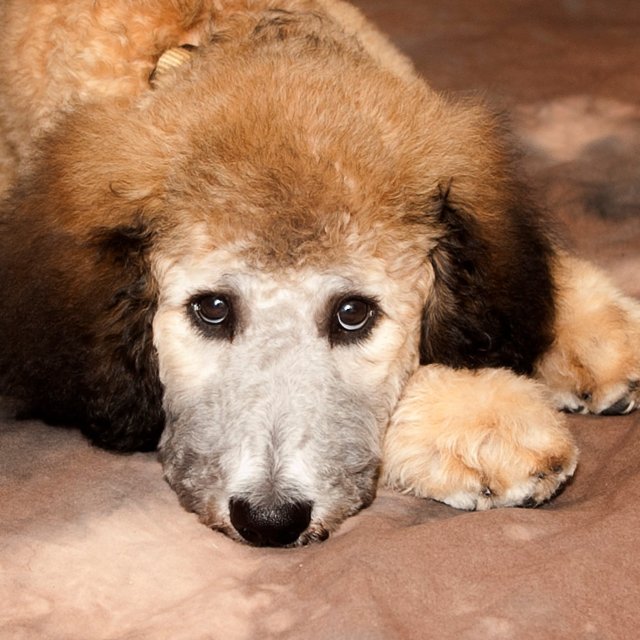 Poodle Coloring
Question
Ssouri
My boy Ssouri is 12 weeks old now. &nbs
Poodle Coloring
Question
Ssouri
My boy Ssouri is 12 weeks old now. &nbs
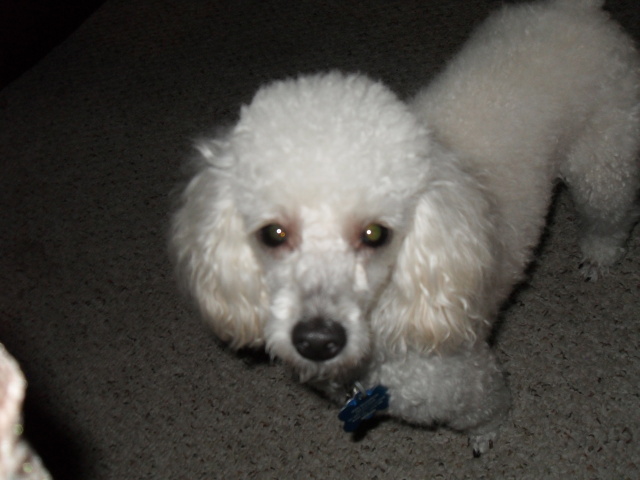 2year old male poodle want to stud
Question
Moseley
I have a white male 2year old reg toy
2year old male poodle want to stud
Question
Moseley
I have a white male 2year old reg toy
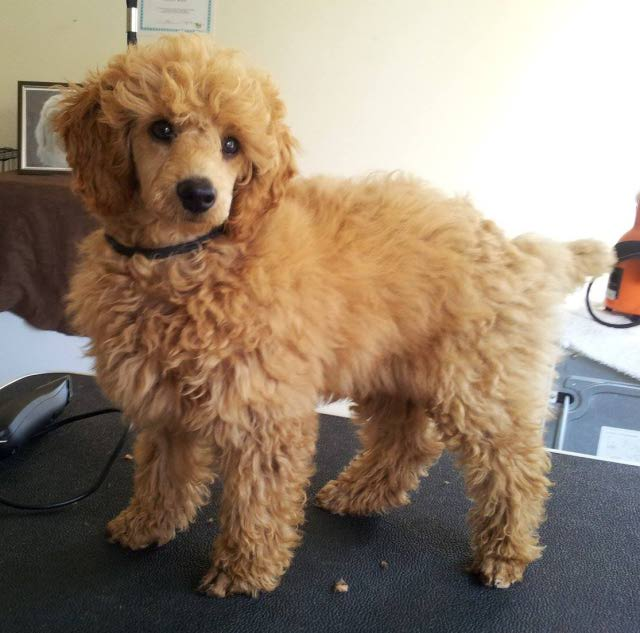 5 month Miniature Poodle
Question
Photo
Hi there - we have Barney, 5mth o
5 month Miniature Poodle
Question
Photo
Hi there - we have Barney, 5mth o
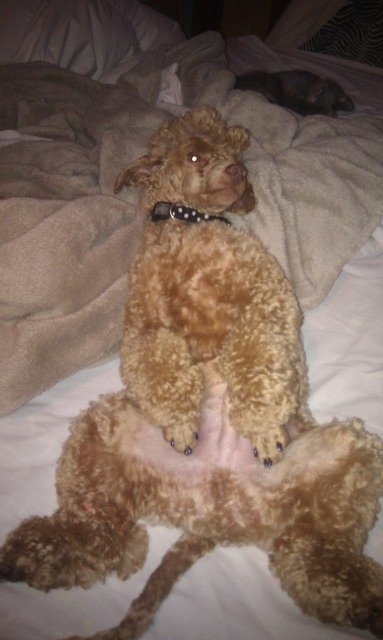 pogo poodle with seperation anxiety
Question
Banner
Hi, I have a 15 month old male d
pogo poodle with seperation anxiety
Question
Banner
Hi, I have a 15 month old male d
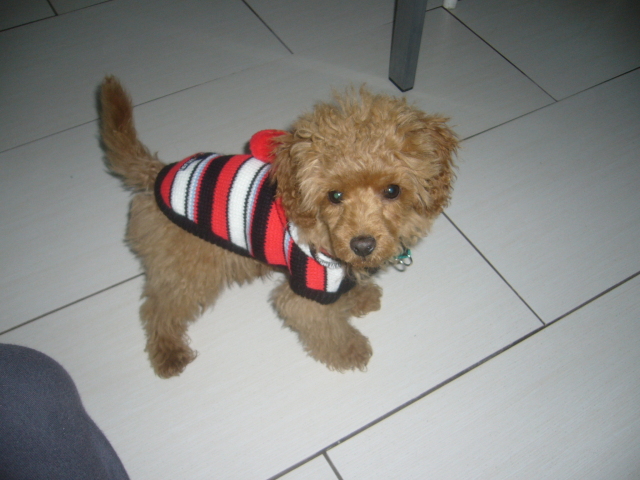 toy poodle weight
Questiontommy
QUESTION: Hello
I have a 4 month t
toy poodle weight
Questiontommy
QUESTION: Hello
I have a 4 month t